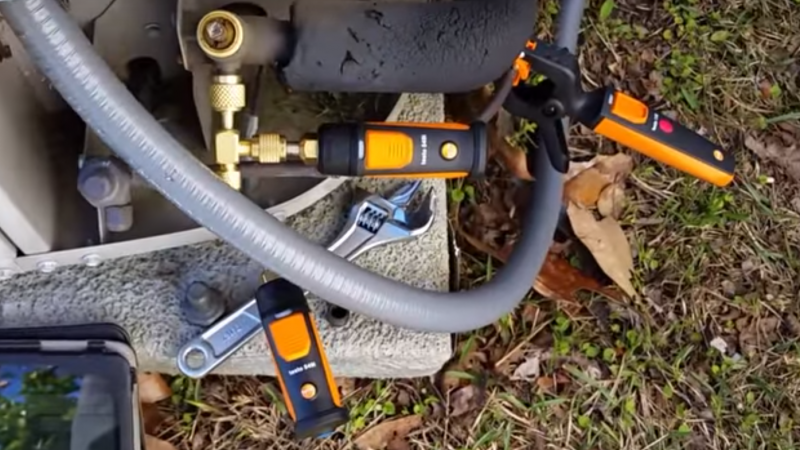Get Tech Tips
Subscribe to free tech tips.
Does Setpoint Lead to Freezing?

Does setting a thermostat too low cause an air conditioning system set in cool mode to freeze?
The answer is no, at least not directly.
However, low evaporator load (low return temperature or low airflow) and low outdoor ambient temperature can lead to evaporator coil freezing. Low indoor setpoint can lead to low return air temperature, which is a low load condition that can lead to coil frost accumulation on air conditioning systems. However, it is actually pretty rare.
It isn't the act of setting the thermostat too low that causes the freezing; it is only when the return temperature drops below the acceptable limit that the freezing can occur.
There is an important distinction we need to make before you go any further. Just because low indoor temperature or outdoor temperature CAN cause freezing, that doesn't mean it is the actual or only cause of freezing.
Many units are misdiagnosed as freezing because of these two causes when the actual cause (low airflow, metering device issues, drier restriction, etc.) is left undiagnosed.
When a system is found frozen, it must be fully defrosted and tested for other issues before a conclusion is made that low setpoint or low outdoor ambient were the root causes.
Most air conditioning systems are set up for around 400 CFM per ton of cooling (but not always).
That will generally result in a 32-38° DTD (design temperature difference) on the evaporator coil, with 35° being the typical standard. The evaporator coil will be 32-38° colder than the return air that passes over it, and ice will begin to form at 32°.
Based on this, return temperatures of below 70° begin to enter a zone where freezing becomes possible (on systems set up for 350 CFM per ton, for example). At a return temperature of 64°, frost formation on the evaporator coil becomes likely.
Again, this is due to the return air temperature, not just the thermostat setting.
Just because the thermostat is set to 67° doesn't mean the return temperature will achieve 67°. In the case of a supply to return bypass damper, as is common in some residential zoning systems, you may see a low return air temperature even when the thermostat is set normally.
Systems with long run times and high humidity return air are the most likely to freeze the coil due to low return temperatures caused by a low thermostat setpoint. For example, in Florida, I have seen vacation homes where a vacationer sets the thermostat to 50° in cool on a rainy spring day and leaves for the day. That makes for a nice frozen coil when they return because of the combination of low sensible load (outdoor temp), lots of moisture to freeze, and all-day continuous run time.
A typical residential system with no special low-ambient controls or freeze protection shouldn't be set below 70° indoors or run for a significant amount of time when it's below 65° outdoor.
That isn't to say that they WILL freeze if you set it colder or run when it's colder than that, but given enough run time, it is possible.
It isn't a system “running too hard” that causes it. It isn't the setpoint itself; it is the heat load on the evaporator coil that can cause the suction saturation to drop below 32°.
Once again, as a technician, never blame setpoint until you have exhausted all other possibilities.
—Bryan










Comments
Okay I will throw in my two cents here, a refrigeration system is designed on balance, heat in heat out. Having been in the industry for 40 years, and taught for 4 yrs, have witnessed more than a hundred times indoor coils iced up and caused by a faulty low ambient control ( or non existent ). If the condenser removes more heat then the evaporator ( I.E. high indoor load and low ambient ), then you can and will have coil icing problems.
Okay I will throw in my two cents here, a refrigeration system is designed on balance, heat in heat out. Having been in the industry for 40 years, and taught for 4 yrs, have witnessed more than a hundred times indoor coils iced up and caused by a faulty low ambient control ( or non existent ). If the condenser removes more heat then the evaporator ( I.E. high indoor load and low ambient ), then you can and will have coil icing problems.
To leave a comment, you need to log in.
Log In